The Theme of the Exhibition: Heroic Rape
The theme chosen for the exhibition is Rape imagery depicted in art. Rape imagery in medieval art did not always depict rape as it is conceived today: non-consensual, forcible penetration not necessarily of a woman by a man (Wolfthal 286). Rape in art has often been believed to be of the heroic form as observable in the case of Poussin’s Rape of the Sabines and Titian’s Rape of Europa (Wolfthal, “A Hue and a Cry”: Medieval Rape Imagery and Its Transformation 39).
It is believed that the rape imagery depicted in prehistoric or medieval art is not the same as that depicted in Renaissance art. This exhibition aims to show a chronological shift in the rape imagery in art by presenting art depicting rape from prehistoric through the 16th century. The exhibition aims to show that not all rapes depicted in the art are heroic where a Greek-Roman God or the hero is the assailant. The aim is to demonstrate the different depictions of rape in art through the ages. The exhibition will comprise of ten illustrations and paintings/ sculptures in a different medium and will represent the different rape imagery depicted in prehistoric and medieval art.
Chosen Works
The works were chosen for the exhibition span a long period to show the change in the imagery of rape and its depiction. The first five arts are from the timeline from prehistory to 1400 AD, and the rest five are from post-1400 AD. The next section describes the ten pieces of art that have been chosen for the exhibition and enumerates the reason for choosing them.
- Rape of Cassandra (480 BC) – The painting depicts the rape of Cassandra as depicted in Ajax attacking Cassandra from “The Fall of Troy”, pottery attributed to the Kleophrades Painter, c. 480 BC (Fitton) (see figure 1). The importance of the illustration is that it is considered to be the rape of Cassandra by Ajax even though no intercourse has been depicted.
- The Rape of Europa (Panel, Plaque, Casket, 10th or early 11th century), Istanbul – ‘Rape of Europa’ is a casket panel carved in elephant ivory, was made in Byzantine (Constantinople) probably during the 10th or 11th century (V&A). The panel shows Europa sitting on a Bull, with her left hand resting on the neck of the bull and the other holding the cloth that draped her upper body. The plaque shows the rape (abduction) of Europa by Zeus who had transformed himself into a bull.
- Levite and His Wife in Morgan Picture Bible (1244–1254) – The rape motif is found in the manuscript miniature illustration in Morgan Picture Bible depicts the image of the rape of Levite’s wife, where the rapist seizes the victim’s hand.
- The rape of Dinah (1360) – The picture, painted by Egerton Genesis, shows Dinah in three stages, first in conversation with a Shechemite woman, then purchasing something from a shop, and the third is the rape scene (figure 3). This picture shows the rape more explicitly with Dinah being pinned down on the ground by the perpetrator.
- Joseph and Potiphar’s Wife (13th century) – A miniature from the 13th-century Georgian manuscript of Histoire Ancienne, in French. The manuscript is illuminated with miniatures on vellum and one of these is the picture depicting Joseph and Potiphar’s wife. The picture depicts Poticar’s wife making distinct advances towards Joseph. In this picture, it is the female who holds the wrist of the man (figure 5).
- The Rape of Helene (1534) – the oil on canvas painted by Francesco Primaticcio depicts the event that precludes the Trojan War. The picture depicts two Greeks carrying Helen to Paris’s ship. In the background, the painting shows Trojan soldiers fighting their geek counterparts.
- Rape of Europa (1559-62) – This is oil on canvas is painted by Titian. An interesting development in the painting is the presence of heavenly elf-like bodies in the painting. This picture is a direct representation of heroic rape imagery that flourished the Middle Ages art.
- Tarquin and Lucretia (1578-80) – The painting is oil on canvas made by Tintoretto. The theme of Lucretia’s rape by Tarquin from ancient Roman history has been dealt with by many artists like Titian, Botticelli, and so on. But this painting by Tintoretto is chosen for the exhibition because the painting shows the tragic nature of the event through the interplay of the twisted body of the two characters compared to the violence or narration of other paintings. Tintoretto depicts Lucretia crumbling away under the onslaught of Tarquin, as the latter tears away the last shred of cloth on her body.
- Rape of the Daughters of Leucippus (1615- 1618) – This is oil on canvas painted by Rubens. It illuminates the story by Ovid of the twin brothers named Castor and Pollux who abducted and married the daughters of King Leucippus (Carroll 3). The painting depicts the intonations of sexual violence.
- Poussin’s Rape of a Sabine (1636-37) – The painting is oil on canvas. The painting illustrates a story from early roman history. When the Romans were unable to obtain a wife, they arranged for a festival and invited the neighboring Sabine women (Wolfthal, Images of Rape: The “Heroic” Tradition and its Alternatives). During the festival, the Romans each seize a woman (Wolfthal, Images of Rape: The “Heroic” Tradition and its Alternatives). This piece of art on rape depicts the epitome of heroic rape imagery in medieval art.
Exploration of the rape theme
All the works were chosen directly to depict a scene of rape conducted mostly on women. The illustrations usually draw from ancient myths and legends. They demonstrate the theme in form of narrative illustration, deduction of the theme, and artists’ improvisation of the theme. Usually rapes depicted in the early paintings, dating before 1400 do not show an explicit illustration of rape being conducted by the perpetrator except for the illustration of Rape of Dinah.
However, in paintings after 1400, the images become more explicit with depictions of sexual violence and erotic images. Violence on the victim and sexual intention is understandable in the paintings of Tintoretto, Ruben, Poussin, and Titan. However, rape in illustrations before 1400 has been implicitly depicted with the perpetrator seizing the hand of the victim or few men groping at the victim (who is fully clothed) as shown in the illustrations of Ajax attacking Cassandra (480 BC), The rape of Europa (10/11th century), Levite and his Wife in Morgan Picture Bible, The rape of Dinah by Egerton Genesis, and Joseph and Potiphar’s wife (13th century).
However, the later rape images demonstrated in painting post-1400 shows a violent undercurrent to the images. Before 1400, the works on the rape theme did not portray sexual violence; rather it showed symbolical hand gestures or movements. Further, as observed in the pictures the victims of rape until 1400 were not depicted with torn or no clothes. But in paintings on rape theme in post-1400s shows the victims in nude or in tattered clothes. Further, these paintings are marked by a clear sign of violence being done or intonation of violence already done in the pathos present in the victim’s eyes. The theme of rape in paintings and sculptures that transformed through the ages is depicted through the paintings that are chosen for the exhibition.
Display plan in the space
The expected audiences for the exhibition are art connoisseurs, students, and researchers of art history, researchers of gender studies, and tourists.
The exhibition will be held at The Cloisters in New York City. This location has been selected for the exhibition as it traditionally houses European artwork from the medieval age. The architecture itself provides a feel of medieval Europe.
The exhibition will be conducted in the evening when the proper usage of lights can be done. The artwork would be mounted on the walls with spaces in-between. Theatrical lighting would be used in the white-walled exhibition room. Apart from the artworks in display there would display with information regarding each art piece and their significance to the theme.
The artworks would be displayed in chronological order with the oldest work starting first. This would help in demonstrating the change in rape imagery illustration in art through the ages. Displaying the artworks in order of their timeline will allow the viewers to clearly understand the changes in the pattern of dealing with rape themes in medieval art.
Information to the viewers
There would be general wall panels displaying the theme and the importance of it to art history. Further, there would be other such displays showing the historical information regarding the paintings, their permanent locations, and their contribution to the theme. I choose to provide complete information regarding the paintings on the individual wall panels as this would provide a complete understanding of the theme of the exhibition.
Appendix
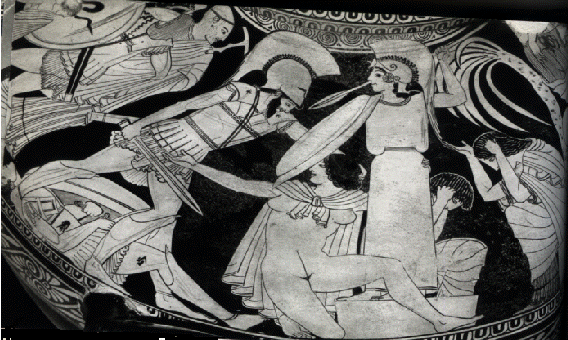
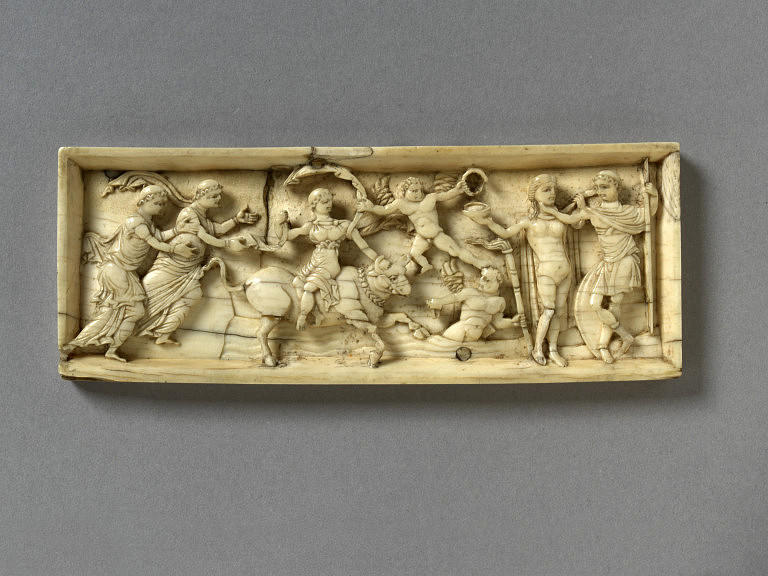
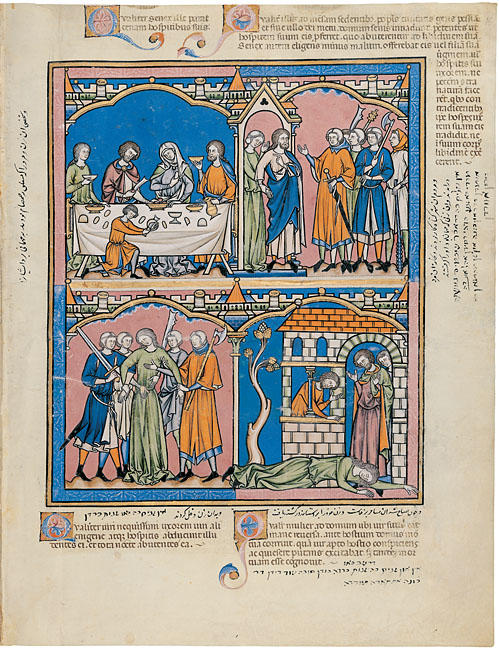
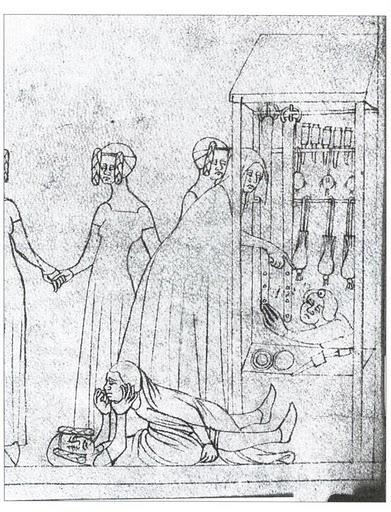
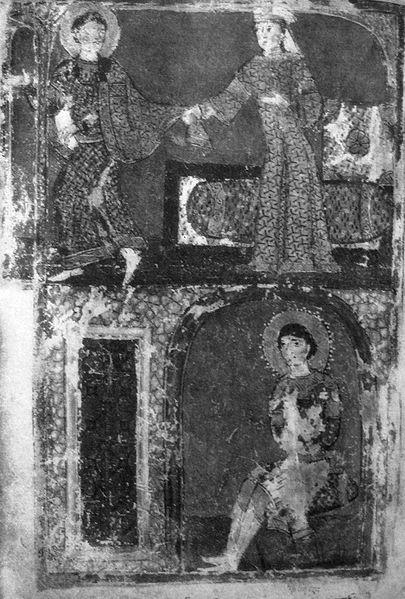
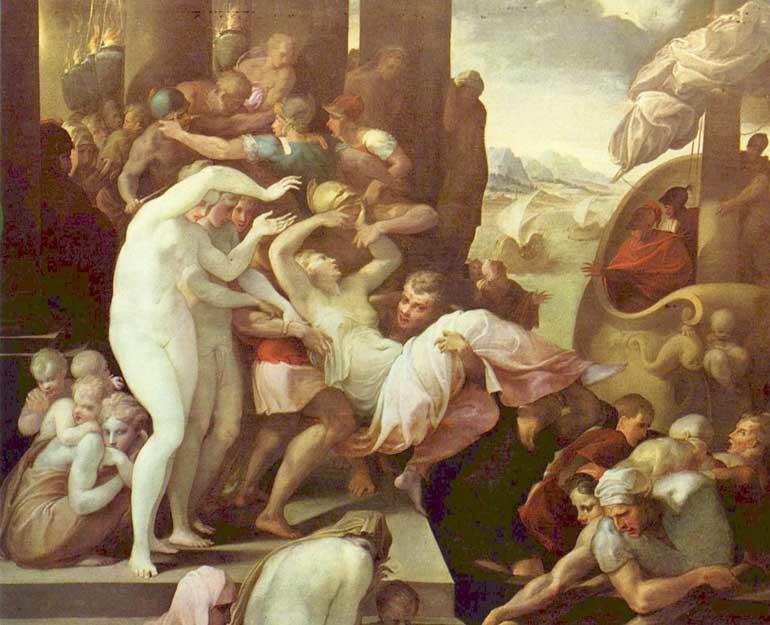
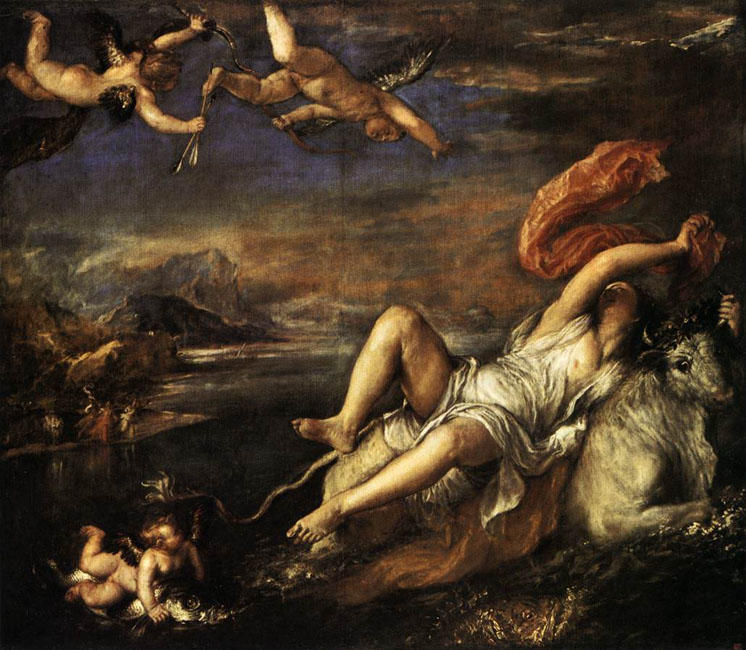
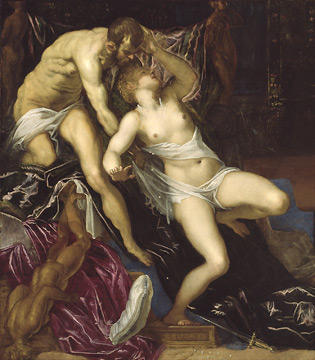
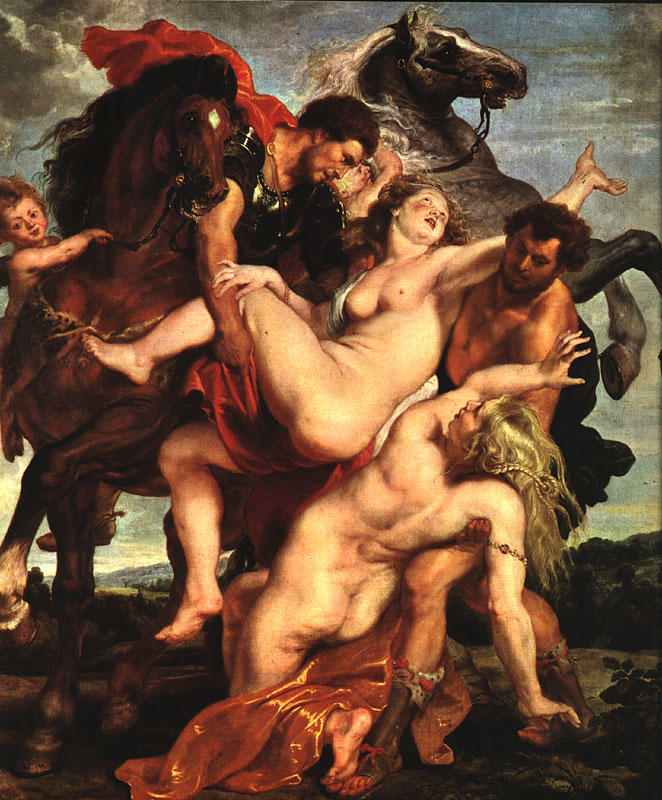
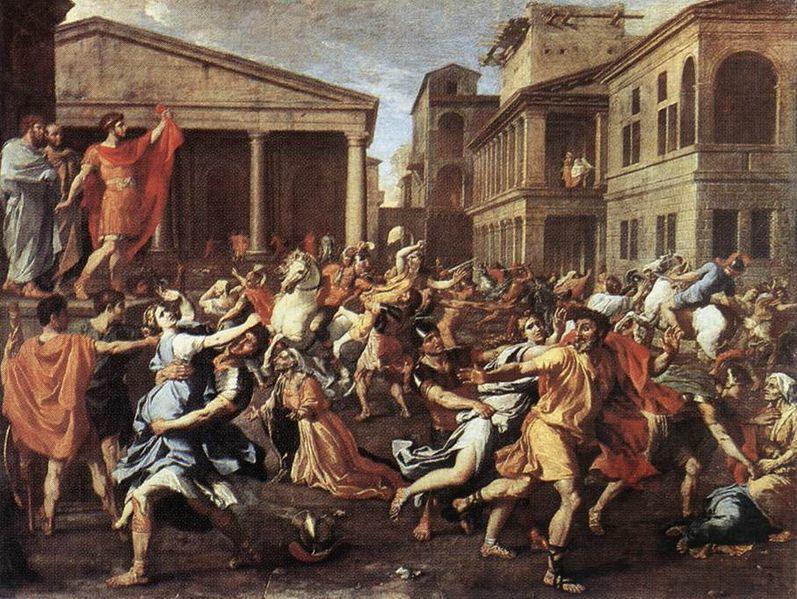
Works Cited
Carroll, Margaret D. “The Erotics of Absolutism: Rubens and the Mystification of Sexual Violence.” Representations, 25 (1989): 3-30. Print.
Fitton, Laura. “Analysis of the Rape of Cassandra.” 1998. Art History. Web.
Louvre. Women of desire: female nudes in Venice. Web.
McGann, Tasha Kelly. “Embellished textile purses in the European 14th century.” 2009. Aumônières, otherwise known as alms purses. Web.
The Morgan Picture Bible. “The Morgan Picture Bible.” 2008. “What a Piece of Work is a Man”: Reading the Body in Medieval Manuscripts. Web.
V&A. “The Rape of Europa.” 2011. V&A Images. Web.
Wikimedia. “Joseph and Potiphar’s wife (Georgian MSS, 13th c.).” 2010. Wikimedia Commons. Web.
Wolfthal, Diane. “A Hue and a Cry”: Medieval Rape Imagery and Its Transformation.” The Art Bulletin, Vol. 75, No. 1 (1993): 39-64. Print.
—. Images of Rape: The “Heroic” Tradition and its Alternatives. New York: Cambridge University Press, 1999. Print.